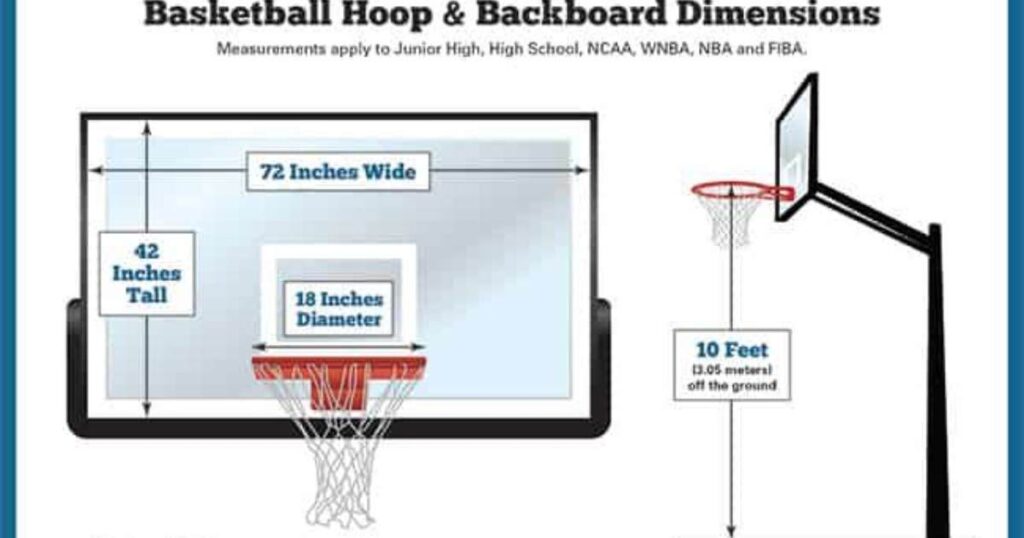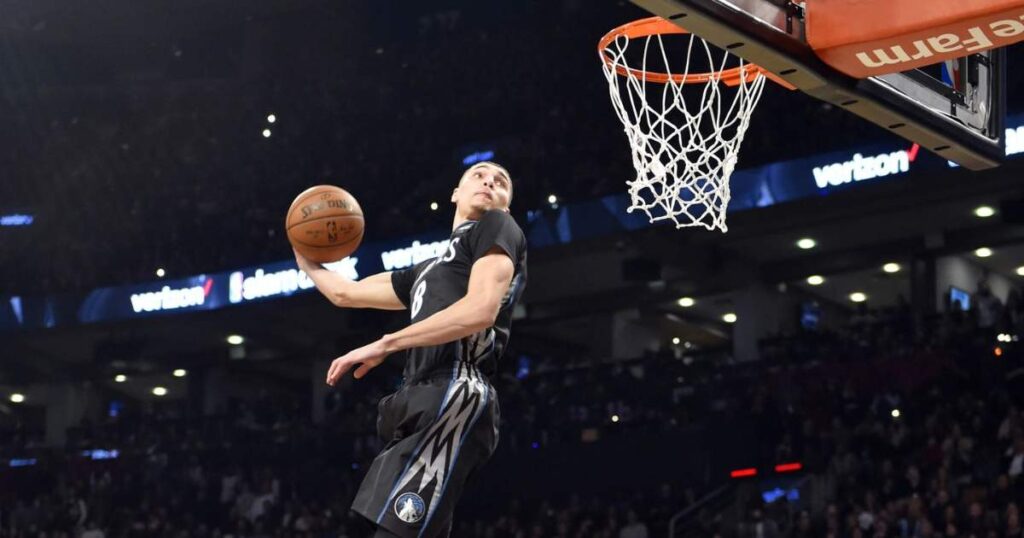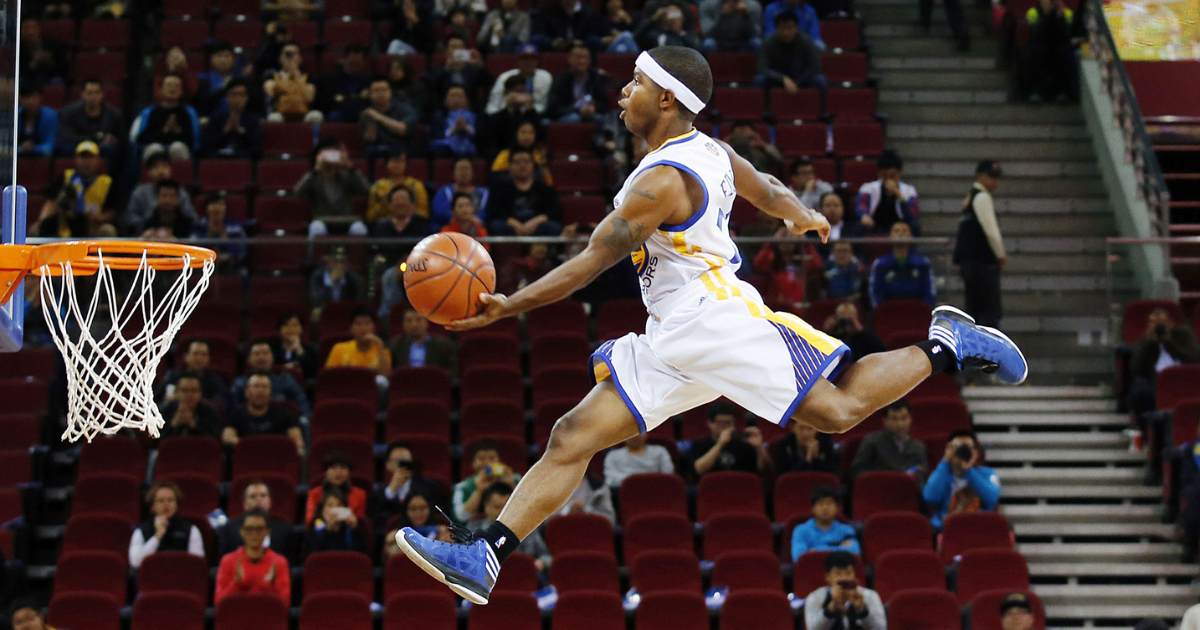Discovering the dimensions of a basketball goal in the NBA unveils the meticulous specifications that govern professional play. From rim height to backboard dimensions, understanding these nuances adds a new layer to appreciating the precision of the game.
At a seemingly lofty height of 10 feet, the NBA basketball goal transcends a mere physical attribute. This regulation height, meticulously maintained across courts, symbolizes the league’s commitment to a standardized and challenging playing experience, where every slam dunk and precise shot reflects the pinnacle of athleticism.
The NBA mandates a consistent 10-foot height for its basketball goals, fostering a level playing field across the league. This standardization ensures uniformity in skill testing and showcases the awe-inspiring athleticism required to conquer the towering challenge presented by the regulation goal height.
Regulation NBA Basketball Goal Height
The regulation height of a basketball goal in the NBA is 10 feet. This specific measurement is a crucial aspect of the game, ensuring a standardized playing experience across all professional courts. Every NBA team adheres to this consistent goal height, creating a fair and challenging environment for players.
It symbolizes the league’s commitment to maintaining a level playing field and fostering competition at the highest level. This standardized height has become an integral part of the game’s identity, representing the pinnacle of skill and athleticism in the world of professional basketball.
Precision in Rim Specifications
In the NBA, the rim stands at exactly 10 feet from the floor. This precision is not just a random choice it’s a carefully set standard. The consistent rim height ensures a fair and challenging experience for all players, making every slam dunk and accurate shot a testament to skill.
Moreover, the 10-foot rim symbolizes a level playing field across all NBA courts. Whether in a bustling arena or a quiet practice facility, the height remains unchanged. This uniformity adds to the excitement of the game, highlighting the league’s dedication to maintaining a standard that tests the athleticism and precision of every player, no matter where they play.
Decoding Backboard Dimensions

Understanding backboard dimensions in basketball is straightforward. The backboard, typically made of transparent material, measures 6 feet in width and 3.5 feet in height. This rectangular surface serves as the backdrop for every shot, determining the rebound angle and adding a strategic element to the game.
A larger backboard provides more rebound opportunities, while a smaller one demands precision. In essence, decoding backboard dimensions reveals the nuanced interplay between player skill and court design, adding depth to the dynamic nature of basketball gameplay.
The Significance of 10 Feet
This 10-foot height isn’t just a random number; it’s a rule. Every court, every game, the goal stands tall at 10 feet, demanding consistent performance from players. If you’re interested in capturing this iconic element in a sketch or illustration, understanding ‘How To Draw A Basketball Goal?’ becomes essential to accurately represent the essence of the game.
When you see a player shooting a hoop or making a slam dunk, remember, they’re reaching for that 10-foot goal. It’s like a badge of honor. So, next time you watch an NBA game, know that every point scored is a triumph over that towering 10-foot challenge.
Uniformity Across NBA Courts
In the NBA, all basketball courts maintain the same regulation height for the goal: 10 feet. This consistency ensures that players face the same challenge no matter where they compete, emphasizing fair play and a level playing field.
The 10-foot height standard is a key element of the NBA’s commitment to maintaining a uniform experience for players and fans alike. Whether in a bustling arena or a smaller venue, this regulated height adds a sense of continuity to the game, highlighting the league’s dedication to fairness and the celebration of skill on the court.
Athleticism and the 10-Foot Challenge

Basketball in the NBA demands incredible athleticism. Players face the 10-foot challenge when shooting for the hoop. This height is no accident; it’s a carefully set standard. It adds difficulty, making every dunk and basket a showcase of skill and physical prowess.
Jumping to reach the 10-foot goal requires strength and precision. NBA players practice tirelessly to conquer this vertical challenge. The uniformity across courts ensures that every game tests the same skill, emphasizing the league’s commitment to fair competition and the celebration of top-tier athleticism.
Measuring Up: NBA Goal Standards
| Aspect | Specification |
| Rim Height | 10 feet |
| Backboard Size | 6 feet by 3.5 feet |
| Rim Diameter | 18 inches |
| Court Dimensions | 94 feet by 50 feet |
| Three-Point Line | 22 feet (corners), 23.75 feet (top of the key) |
In the NBA, the basketball goal has a specific height: 10 feet. Every court follows this rule. It makes sure every player faces the same challenge when shooting or dunking. The 10-foot goal is like a shared test for all players, showing off their skills and athleticism.
This standard is crucial for fair play. Imagine if each court had a different goal height! The NBA goal standards keep the game exciting and competitive, creating a level playing field where every slam dunk and three-pointer is a testament to a player’s ability to measure up to the league’s challenging standards.
The Evolution of Basketball Goal Heights
In the early days of basketball, goal heights were not standardized. Different courts had different heights, making it a bit like shooting hoops with a moving target. Players adapted to the varying heights, showcasing their skills in unpredictable settings.
As the game evolved, a need for consistency emerged. In 1981, the NBA established the 10-foot standard for basketball goal height. This decision aimed to create a level playing field, ensuring that every slam dunk and jump shot faced the same vertical challenge.
Navigating the NBA’s Vertical Challenge

Navigating the NBA’s Vertical Challenge requires precision. The basketball goal stands tall at 10 feet, a constant across all courts. Players aim for the sky, showcasing their athleticism in every dunk and shot. This standardized height creates a level playing field, emphasizing skill and the awe-inspiring challenge of reaching the pinnacle of professional basketball.
In this vertical realm, 10 feet isn’t just a measurement. It symbolizes the NBA’s commitment to excellence. It’s more than a goal; it’s a representation of the league’s history and the relentless pursuit of perfection. Every jump toward that rim is a step in the journey of conquering not just the height but the essence of the game.
FAQs
What is the height of an NBA basketball goal?
The standard height is 10 feet.
Why is the goal set at this height?
It provides a challenging and uniform playing experience for all NBA players.
Has the height of the goal always been 10 feet?
Yes, it has been a consistent standard for decades.
Are youth or college basketball goals the same height as in the NBA?
No, they often have different height specifications.
How is the height of the goal maintained across all NBA courts?
The NBA strictly enforces regulations to ensure uniformity, with 10 feet as the mandated height.
Conclusion
In delving into the question of How Tall Is A Basketball Goal In The NBA? we unravel the meticulous standards that define professional play. As we navigate the vertical realm of NBA basketball, the goal height becomes more than a measurement; it becomes a representation of the league’s history, a symbol of excellence, and a constant pursuit of perfection.
Whether on the court or in the minds of fans, the 10-foot standard stands tall, creating an enduring legacy that transcends mere physical dimensions, capturing the spirit and athleticism that define the pinnacle of professional basketball.



